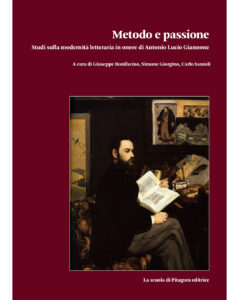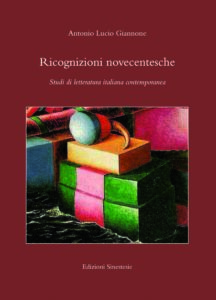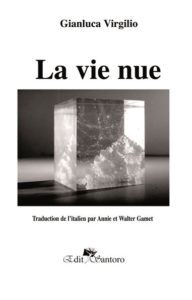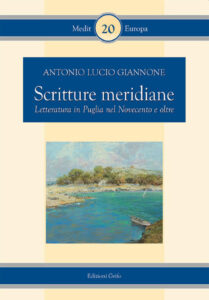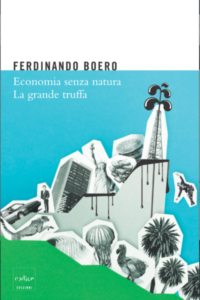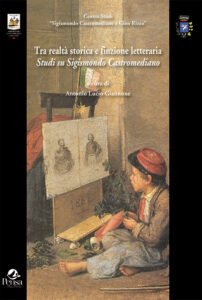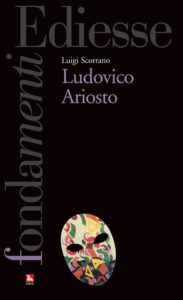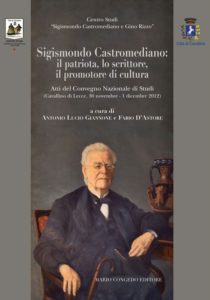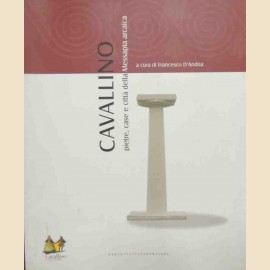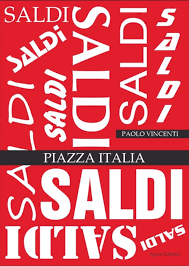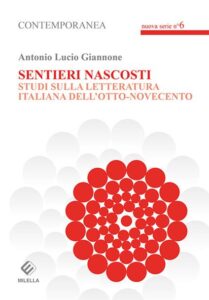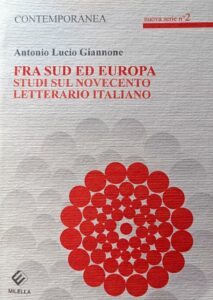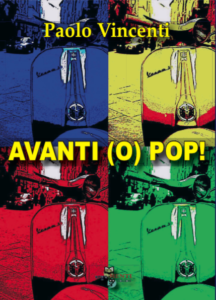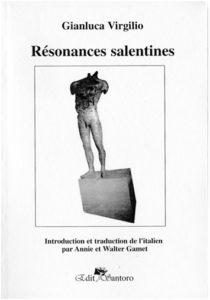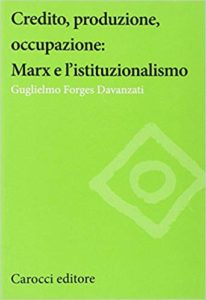 di Luca Benvenga
di Luca Benvenga
Introduction
I believe that it is possible to carry on Lefebvre’s thought trying to fix the coordinates of a possible political economy of the metropolitan space, where there are some contrasting subjective regularities that restore the difference between isotopy and heteropia in the contemporaneous metropolitan paradigm. From this basic assumption, the path of the speech is turned to the synoptic observation of the control and exclusion systems of specific social classes (voluntary and spontaneous isolation, H. Lefebvre, or. 1967, tr. it. 1968); finally, assumptions can be made on how some fragments of the territory can be transformed by fractions of population, whose desires, turned into patterns, originally, conflicting with the normative-symbolic order, must be found in a series of initiatives aimed at the re-appropriation of a physical space, with an increase in subjectivity that redefines the role of space in the metropolis.
Although the Right to the city takes its place between a Keynesian, Taylorist, Fordist system and the advance of a Toyotist paradigm, Lefebvre catches the origins of the socio-urban changes in conformity with the fast ratio (space compression, reduction of time with the automation of the production processes combined with the new communication and transport technologies), where several systemic strategies are simultaneously carried out to eliminate the topographic city differences; therefore, Lefebvre establishes new urban development needs in the reconversion of the capitalist pattern, with procedural effects on the territorial planning and on life in a broad sense.
With the more and more new cybernetic systems and outsourcing services, the factory, the production as a theatre of struggle and social aggregator, at least in the late-capitalist West, gives way to a conflict that is increasingly centred on the space category and not on the reduction of time to the owner’s authority. In a “two-dimensional decomposition of the everyday life”, (cf. G. Cersosimo 2017, 15,) focusing on a socially organized time and a relatively free time, which is always related to the capitalist organization of production and work, the key to conflict is, nowadays, the re-appropriation of means and resources to enjoy the spare time in a society with no producers recording a clear decrease in employment, with flexible working hours and moments where it is possible to record a higher involvement of the lower classes.
After the impact that the economic and political restructuring had on particular social classes in the last thirty years (hyperprivatization of personal interactions, streamlining of some urban areas to reproduce the underpaid workers, gentrification of the neighbourhoods, e.g. the Gracia quarter in Barcelona, the Parisian banlieu or the Los Angeles ghettos described by M. Davis in La città di Quarzo, tr. it. 1993), attention must be turned to a contemporary negation of the socializing subjective extra exchange value. This theme, discussed by the French sociologist, was represented in a basically disciplinary space and emphasized in the extreme production capital logic, which basically confines the volumetric polyphonic requirements spontaneously in specific areas of the metropolis, showing behavioural and value models that confirm dynamics aiming to reconsider the subject-structure interaction locally, and that stand the Capital uniformity process (see the neighbourhood of St. Pauli in Hamburg). The technical specialization resulting from the technological reorganization of the working tasks underwent the emergence of a new power distribution, which marked the end of Foucault’s disciplinary society (and, in my opinion, a return to a pre-bourgeois prevention system, with physical boundaries even more clear), and the beginning of social control forms not aimed at creating functional bodies for the production cycle, but at incapacitating the surplus of labour (A. de Giorgi 2002), it is a part of a clear dynamic that does not answer for the social citizenship any more. The suburbs, arisen for the industrial labour stabilization and their reproduction (S. Palidda, 2016, 98), today emphasize the class response of the capitalist neo-liberism to its own mechanisms of exclusion generated by an accumulative ratio that can be expropriated (cf. A. Davis, 2016); they are considered as situational prevention sites monitoring men and women who have difficulty finding a job (or, at best, they undergo an unproductive dispersion because of a clear separation between the human cognitive capital and the downgraded job application).
 A necessary condition for finding an analytical consistency with Lefebvre’s theory is the acceptance of the assumption on the coexistence of subjective conflicts socially defined (which will be checked on the following paragraph) and resulting in:
A necessary condition for finding an analytical consistency with Lefebvre’s theory is the acceptance of the assumption on the coexistence of subjective conflicts socially defined (which will be checked on the following paragraph) and resulting in:
- a) the “securitization”, that can be identified in the hyper-privatization of social relations (Coney Island and Disneyland above all), in the technical rationalization of the physical space that passes “through the exchange value, trade and profit” (H. Lefebvre, 121);
- b) a Capital reproduction standstill. This is possible because subjectivity is by definition within and against society, it allows Capital to produce value, but not to consider life as goods (F. Chicchi, 2015).
Urban-production transformations in the post-industrialized West: new processes of isolation
Lefebvre’ thought, which took shape in his 1967 work, is a starting point to investigate the mutual interdependence that arises between the individualization processes and the socioeconomic transformations which characterized the forty-year period between two centuries, to better understand and analyse the running and reproducing logics of a social system based on the rationalization of social relations as a stage ensuing the rationalization of production relations (M. Cacciari, 1973, mentioned by V. Codeluppi, 2014); specifically, his thought reflects a certain contemporaneity referring to an intersubjective as well as performative extent and with a high decision-making power for the individual, with a trend curve aimed at recording an autonomous consumption and no more a supplement to production, whose consumer is an active process in maximizing the late-Capitalism rationality that paves the way for new – both critical and hostile – scenarios, as well as based on the acceptance principle of a mere passive consumer.
Ten years after publishing The Right to the city, since the eighties a position of individual status has been expressed through the enjoyment of a space used as a relational and emotional area; surplus value can be produced by wandering about with enveloping and penetrating marketing operations, materialized in a “space phantasmagoria of functional diversifications” (Raban, 1974 mentioned by G. Borelli, 2012, 116) which turns in theme parks, market-streets, non-places (shopping mall), with a clear and growing inequality in accessing that prevents the meeting of inter-class sensitivity, that is the prerogative of a global and socially mixed city. From these considerations, a guideline of the conflict becomes widespread, for large sectors of individuals, going from resistance to expropriation (precisely the extractive capitalism), from the right of occupancy and the social cooperation (income, improvement of living standards through “ecological islands”, self-management as a reaction to the dismantling of social state, cf. M. Ilardi, by, 1996), that are tangible in the historicization of Lefebvrian heterotypical groups (cfr. H. Lefebvre, tr. it. 1968) converging spontaneously to define paths of immediate transformation (cf. A. Touraine 1991; A. Petrillo 2003; Mike Davis 2008) and radical changes of scenario (from Seattle, 1999 to Buones Aires, 2003).
Lefebvre here is useful to understand the postmodern split, the change from the welfare city to the neo-liberal city, to show how the economic and commercial architecture has affected the interaction system; all that brought about the decline of the industrial city and of dialectics between two or more interacting bodies in a space, thanks to the socio-urban transformations (suburban allocation of the middle-lower classes and concentration of the subordinate classes in areas subject to obsolescent works) and to the new power relationships, with the beginning of an accumulation system where digital platforms play a central role in the capital accumulation, embodied in the reproductive components of life (F. Chicchi, op. cit., et. al.). In short, with the beginning of a robotized production cycle which will basically come to the end of the manual labour, in the long term, the compulsive change will affect:
- The systems of subjectivity achievement, which have a strong foreclosure effect due to an incapacitating control logic (A. De Giorgi, op. cit.);
- The conspiratorial representation of reality, seized and based on the counter-use of urban space.
- The conflict divided into segments due to a fragmented identity as a by-product of the social and productive framework weakening where it was reproduced (the algorithm method has replaced factory in the mass management and ended the cycle of struggles and therefore the claiming of the social rights on a large scale).
Following the historical development of Lefebvre’s theory, in order to examine the relationship between men and territory closely in the last ten years (self-organization forms and new collective action mechanism), his thought has brought about considerable sociological, geographical, historical and political articles, which stress the importance of specific multidisciplinary food for thought supported and driven by the realization of the equation social wealth production: social risk production=post-Fordist accumulation: multitude government. The examples are represented by D. Harwey with his Capitalism beyond the right to the city, 2016, whose objective was to check empirically the hypothesis according to which urbanization plays an active role in absorbing the overcapitalization produced by the constant search for surplus value. Harwey’s books refer to Marxist thought saying that Capitalism is based on profit production, however it must also be said that nowadays Capitalism takes also surplus value out of the bare subjectivity, collective intelligence, social reproduction and cooperation, financial business, (see, on this point, all mechanisms governing crowdsourcing or crowdworking) – but also out of private assets that are collectivized through un-feudal instruments (uber, airbeb, foodora); there are many concordances between Lefebvre’s thought and Beck’s theory about the risks within society (and somehow between Alain Touraine’s theories about “spatialization of differences”, whose position was maintained in 1991 following some riots in suburbs, for this living condition the possibility of sharing values and projects between the town residents is remote, cf. A. Touraine mentioned by A. Petrillo, 2004, 21-22); even Jean Pierre Garnier follows Lefebvrian logic, discoursing critically on the existence of physical criminogenic spaces and on hierarchy of place status to prevent the conflict of use among the various users and to remove social anger, with great attention to breaks in urban fabric and to the rising vocation of a specific group of citizens (cf. tr. it., 2016, 47 sgg.).
At the same time, the socio-urban changes, that are typical of Global city, have paved the way for new urban development needs (such as service industry, transformation of suburbs into town, abandonment of the historic town centres and increase of the number of applications for residence in the innercity and of high-income production activities in the downtown), have changed the subordinate positions to power relationships through winding hyper-individualized paths refractory to compromises and to the mediation of traditional political players, thus justifying an inconsistent response to the exclusion mechanisms, where new rules of the road and of digital technology are applied (to be considered as an expression of the concept of Lefebrvrian unlimited space); they are represented by a scenario made up of collective, cooperative trials, which is a necessary condition for a radical change in search of a central role of the individual, even if they are considered as privileged spaces by the contemporary exploitation logics, therefore we need to understand what line of conduct to follow so as not to be upset by the awareness of a social action that agrees with its antithesis.
The weakening of the historic compromise based on the stabilization fostered by the social parties (trade unions, parties, institutional bodies), is the result of the capitalist reorganization in the production and circulation of goods in the Seventies, with a consequent decline in the expressing ways of the citizen participation. It was possible to observe a path emphasizing both the overcoming of the classical categories of political science (for the benefit of an extra-institutional and acephalous path), and a real increase in radicalism in the neighbourhoods and in the streets (see commodity riots of London in 2012): the weakening of the central role of production has predicted the necessity of a new “class awareness”, with the spreading of new identity paths, which will merge with a conflict including a new context of struggles (by all sorts of struggles, from that one against the inequalities in access to services, to the protection of the historic town centres) where the metropolis will be the object of contention.
From a purely sociological perspective, the new structural changes have caused a clear manpower explosion from the production networks in the West and the blocking of rising mobility in the short and long period, as well as, at topographic level, the building of a metropolis organized on the basis of a social geography aiming at «residential isolation» (cf. A. De Giorgi, 2000). The social conflict starts to be divided in minor conflicts forms pushed to the sidelines of the capitalist restructuring, and it affects individual segments and territories hetero-represented as problem bearers. It is a conflict which acts as a background to the social body that will undermine the “actuarial monitoring” project of the physical space through the collectivization of the social needs, the housing occupations (besides the above mentioned St. Pauli district in Hamburg, also see the London East End of the Seventies), in response to gentrification processes and to property speculation, with reference to antagonism forms marked by new elements and molecular patterns which will affect the socio-economic structure on an international basis.
Here is the idea of an aspirational ratio (paraphrasing the concept of “aspirational class” by M,.Currid-Halckett, 2017) to foster a self-identification process of social micro-groups and of individual autonomy in the space, by presenting a floating population, a confused context which apparently seems, in the communicative flows and in many aggregative and cooperative forms, distinct but contiguous (it passes from the practices of community gardens to the regeneration of the whole neighborhoods). The theoretical assessment of the counter-use of physical space includes a legitimacy process justified by specific marginal existential conditions, bringing about the meeting of more factors: structure, individual, culture, particular elements to fully understand the characteristics of the new social relations of extra exchange value, whose ambitions are not restricted to something peripheral and meaningless, at least until the basic logic of spontaneousness and horizontality holds.
Conclusions
Following these preliminary remarks (which are not exhaustive) the questions which scientific community must answer today, by rereading L., are as follow: What new balances are established and broken simultaneously between the producers and beneficiaries of spaces, with the incessant growth of a neoliberal capitalism where every existence is in conflict with the local political-economic and socio-cultural interests? How to carry out the new forms of exploitation (monetization of creativity and spare time, collectivization of private assets, etc.) and how to overcome them? In today’s circumstance, what social resilience process is conceivable in the metropolitan space (mainly in its suburban areas)?
To that end, we have shown that it is necessary to understand how the breaking of that age-long balance between urban centres was spread. It comes from the projects of social engineering and technicalities characterizing most of the 20th century, whose territory has been divided into separate areas symbolizing the portrayal of darts where once stood modernity; then, it has been replaced with a global progressive and post-modern affirmation of the widespread metropolis, with bodies which, looking for reassurance (even if only perceptive), in most cases moved towards globally virtual areas, the non-places (so called shopping malls, because they « are able to dominate the territory, to bring about urbanization phenomena and attract masses and flows», V. Codeluppi, 2014, 19); they are devices of an anxiety-inducing society that avoids, not without problems and sudden reversals, heterogeneous crossings between different individuals because of their economic and racial origins, whose prevention exerted on each area of the city (suburban districts), aimed at weakening superstructurally the social production of insecurities and at allowing to govern them with social control instruments (such as the “counterurbanization” policies of Los Angeles), combines the need to create the identity and to establish the boundaries on the basis of a clear environmental stratification. Petrillo (ibidem, 23) argues that the city is divided into two macro-areas: on the one hand there are the privileged sites of hyper-optimization of Capital and on the other hand the devaluation of the work, tangible in all suburbs of the world. If, as Lefebvre writes, the urban area is “the society projection on the territory”, the coeval image of a suburban area “can be interpreted as a result of the social and economic dynamics acting on territory and draw a map completely different from the official one, which does not start from a planned change but from the ways people move and act on the habitat according to the survival needs. This map not only describes a different meaning of citizenship, but also a redefinition of the Right to the city. Although the urban territorial expansion implies a decline in the concept of suburbs, mainly for those neighborhoods that with time came nearer the town, thanks to an increase in the public and private mobility, the lack of the habitat quality (lack of services, public area shortage, dangerous streets) continues to represent an isolation, being synonymous with suburbs” (cfr. A. Criconia, 2017).
In my opinion, these suburban areas, with their critical aspects are also a fertile ground for clarifying any concrete subject today on the Right to the City and its reverse side, which is based on anti-compelling spatial boosts. The Right to the City as understood by Lefebvre, lives on practices of territory secession from the space-time organized by the global Capital (“Infoaut”, cf. 2015) “it appears as a higher form of rights, as the right to freedom, to individualization in society, to habitat and of occupation. The right to work (to the participating activity) and the right to enjoyment (different from the property right) are implied in the right to the city” (H. Lefebvre, 130).
In short, rethinking of the city today passes inevitably from the abandonment of the private property, from an expressive-cultural network urged by appropriative practices from the lower classes, from the denial of a “restrained” mobility, so it will be possible to write that missing chapter, which for a lot of people, and for me, characterizes the French scholar’s work; although it is incomplete, it is full of remarks, and is certainly very useful for a dialectical confrontation, also fifty years after his publication.
Riferimenti Bibliografici
Barbier J.C. – Nadel H., (tr. it. 2002) La flessibilità del lavoro e dell’occupazione, Roma, Donzelli.
Bauman Z., (tr. it. 1999) Dentro la globalizzazione. Le conseguenze sulle persone, Roma, GLF editori Laterza.
Beck, U., (tr. it. 2000) Il lavoro nell’epoca della fine del lavoro, Torino, Einaudi.
Bordieu P., (2015) La miseria del mondo, Milano-Udine, Mimesis.
Borelli G., (2012) Immagini di città, Milano, Bruno Mondadori.
Castells M., (tr. it. 1975) Lotte urbane, Padova, Marsilio.
ID., (1997) The power of identity, Oxford, Blackwell.
ID., (tr. it. 2002) La nascita della società in rete, Milano, Egea.
Cersosimo G., (2017) Il tempo simbolico della città, a cura di, Milano-Udine, Mimesis.
Codeluppi V., (2014) Metropoli e luoghi del consumo, Milano-Udine, Mimesis.
Criconia A., “Rimodulare il Diritto alla città. Tor Pignattara, una periferia romana multietnica”, disponibile su http://www.fondazionecriticasociale.org/2017/04/21/rimodulare-diritto-alla-citta-tor-pignattara-periferia-romana-multietnica/, consultato in data 20/12/2017.
Currid-Halkett M., (2017) The Sum of Small Things: A Theory of the Aspirational Class, Princeton University Press.
Davis A., (2015) Freedom Is A Constant Struggle: Ferguson, Palestine, and the Foundations of a Movement, Chicago, Haymarket Books,
Davis M., (tr. it. 1993) La città di quarzo. Indagine sul futuro di Los Angeles, Roma, Manifestolibri.
De Giorgi A., (2002) Il governo dell’eccedenza, Verona, Ombre Corte.
ID., (2005) Traiettorie del controllo. Riflessioni sull’economia politica della pena, Soveria Mannelli, Rubettino.
Gallino L., (2001) Il costo umano della flessibilità, Roma-Bari, Laterza.
Garnier J.P., (tr. it. 2016) Lo spazio indifendibile, Torino, Nautilus, pp. 27-59.
Hardt M., Negri A., (tr. it. 2002) Impero, Milano, Rizzoli.
Harwey D., (1990) The Condition of Postmodernity, Oxford, Blackwell.
ID (tr. it. 2016) Il capitalismo contro il diritto alla città, Verona, Ombre Corte.
Lefebvre H., (tr. it. 1968) Il diritto alla città, Verona, Ombre Corte.
ID., (tr. it. 1976) La produzione dello spazio, Milano, Moizzi.
ID., (tr. it. 1973) La rivoluzione urbana, Roma, Armando.
Kasarda J., Parnell A., (1993) Third World Cities: Problems, Policies and Prospects, New York, Sage.
Longo M., Salento A., (2011) (a cura di), Tutto sotto controllo. La sicurezza in una città di provincia, Roma, Carocci.
Negri, A. (tr. it. 2008), Fabbrica di porcellana. Per una nuova grammatica politica, Milano, Feltrinelli.
Palidda S., (2016) Sociologia e antisociologia, Limena, Edizioni libreria universitaria.
Papartegiadis N., (2000) The turbolance of migration. Globalization, Deterritorialization and Hybridity, Cambridge, Politi Press.
Petrillo A., (2004) Città in rivolta, Verona, Ombre Corte.
Rauty R., (1995) Homelessness: povertà e solitudini contemporanee, Genova, Costa&Nolan.
Sennett R., (tr. it. 2006) La cultura del nuovo capitalismo, Bologna, Il Mulino.
“Sui processi di soggettivazione. Intervista a Federico Chicchi” (2015) in Sudcomune, n. 0, pp. 58-63, disponibile su http://www.sudcomune.it/2016/10/30/sui-processi-di-soggettivazione-intervista-a-federico-chicchi/, consultato in data 21/11/2017.
Vercellone, C. (a cura di) (2006), Capitalismo cognitivo. Cooscenza e finanza nell’epoca postfordista, manifestolibri, Roma.
Wacquant., (tr. it. 2006) Punire i poveri, Roma, Deriveapprodi.
Wieviorka M. (1996) Violence, Culture and Democracy, in “Public Culture”, 2.
[in http://www.tafterjournal.it]







